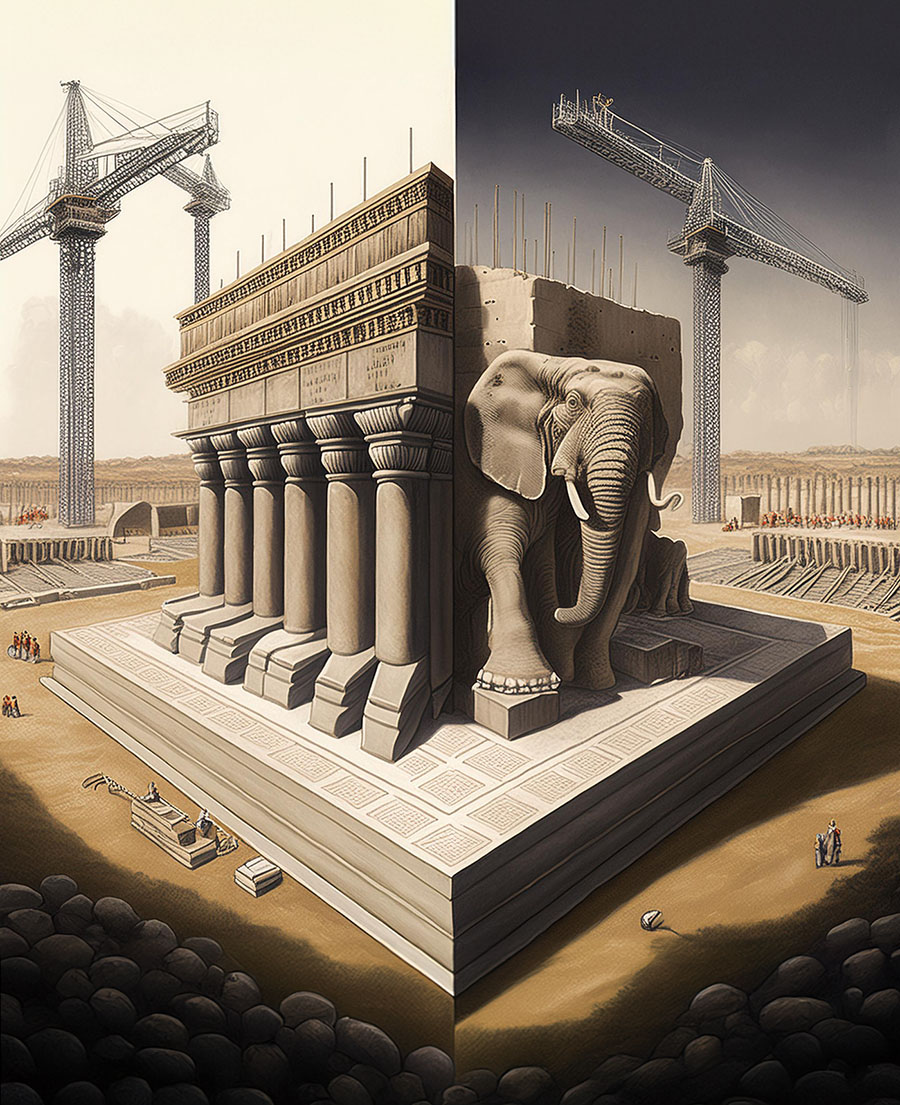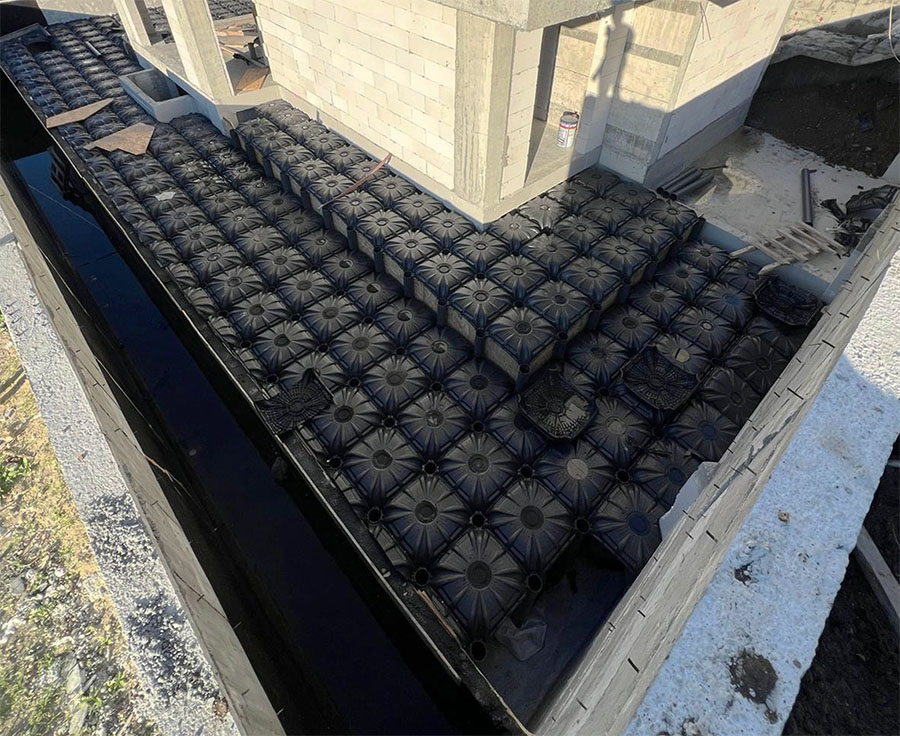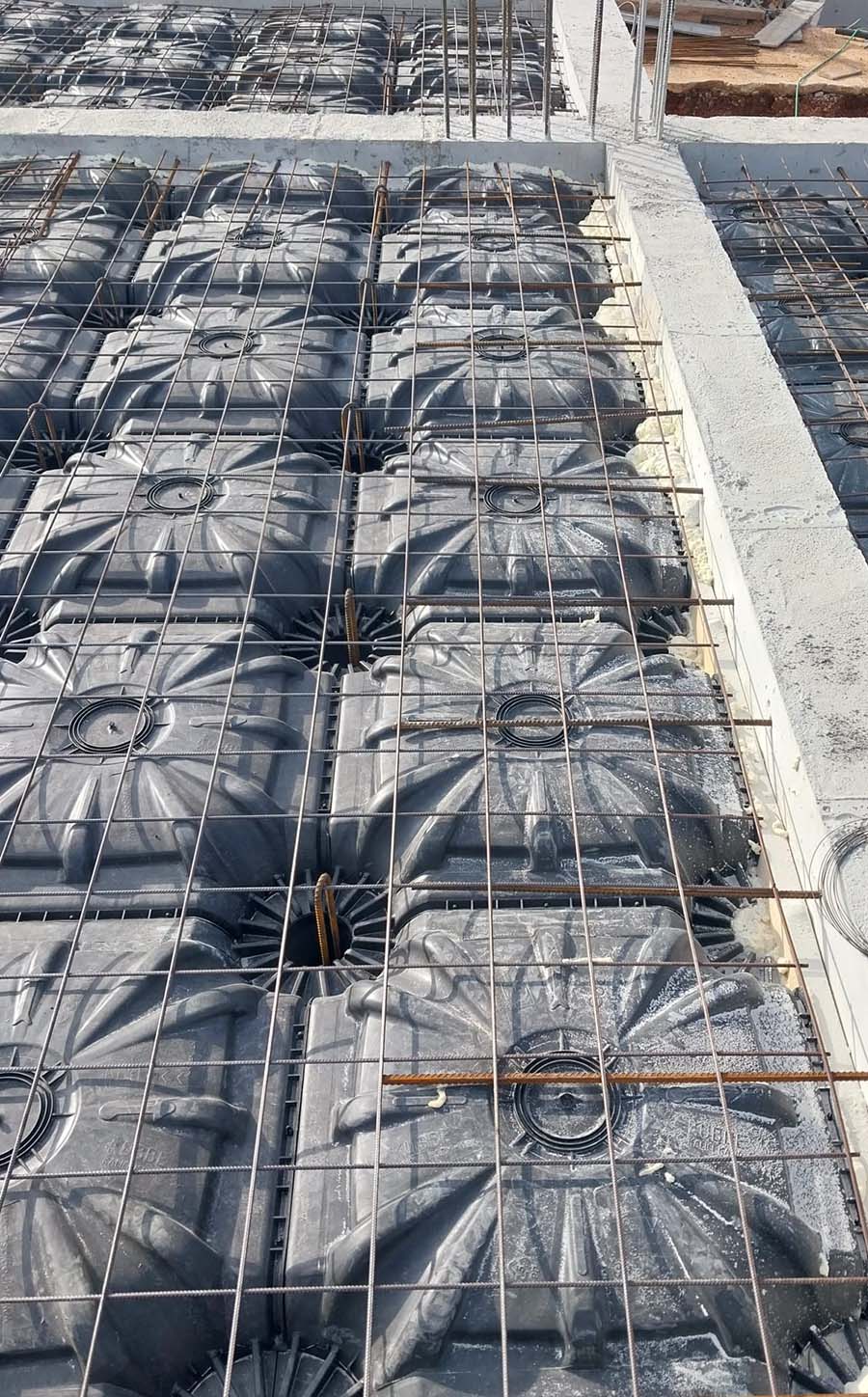Historical Building Technique ``Elephant's Foot``
Why Disposable Formwork?
The construction method called “elephant foot” is a construction technique historically known for its strength and durability. The carrying capacity of the elephant’s natural structure and the strength of its feet can be likened to disposable formwork systems in modern construction techniques. The cistern-shaped structure of disposable formwork systems, like the wide and strong bases of the elephant’s feet, is designed to be used in construction embankments and is an ideal solution for building strong, durable structures.
Historical Origin
- Ancient Periods: Elephant foot construction was widely used in antiquity. In ancient Roman and Greek architecture, this technique was preferred to provide stability in the foundations of large and heavy structures.
- The Middle Ages and After: In the Middle Ages, this technique was also used in the foundations of castles, cathedrals and other large buildings. Especially in Europe, elephant foot-like foundations were common in Gothic architecture.

Usage Areas and Integration
- Cathedrals and Churches: This technique was frequently used especially in cathedrals built in the Gothic period. With modern blind formwork systems, the restoration or reconstruction of such structures can be carried out more quickly and cost-effectively.
- Castles and Defence Structures: In medieval castles and other defence structures, elephant foot foundations were used. Today, modern blind formwork systems can be used to protect and strengthen these structures.
- Modern Buildings: Today, elephant foot-like foundation systems are also used for some large and heavy structures. Especially in structures such as high-rise buildings and large bridges, more robust and durable structures can be built by combining this technique with blind formwork systems.

Advantages
- Durability: Elephant foot foundations increase the durability and longevity of the structure. This durability is further reinforced with blind formwork systems.
- Balance: It provides a balanced foundation system by distributing the weight of the structure over a wide area. Like the balance provided by the elephant’s wide legs, the cistern-shaped structure of the blind formwork systems enables this distribution to be done more easily and quickly.
- Stability: Deep foundations increase the stability of the structure and provide resistance against ground problems. Like the stability of the elephant’s legs, blind formwork systems offer great convenience in the creation of deep foundations.
Disadvantages
- Costs: Traditionally, elephant footing foundation systems can be more costly than other methods. However, blind formwork systems offer an economical solution by reducing these costs.
- Time: Traditional methods can take more time than other foundation systems. Blind formwork systems eliminate this disadvantage by shortening the construction time.
The elephant foot form of construction has stood out throughout history as a robust and durable foundation system preferred for the construction of large and heavy structures. When combined with modern disposable formwork systems, it can set a new standard in the construction industry, inspired by the carrying capacity of the elephant and the strength of its feet. The cistern-shaped structure of the disposable formwork systems ensures that the structures are built both robustly and economically.

Lightest Backfill Material
Our backfill material is designed to be the lightest option available, making it easy to transport and handle on-site. This lightweight solution reduces the overall load on structures, enhancing stability and safety.
High Load Carrying
Our disposable formwork are engineered for superior strength, capable of carrying high loads efficiently. This makes them ideal for demanding construction projects where durability and reliability are crucial.
Fast and Easy Installation
Designed for simplicity, our products ensure quick and straightforward installation. This user-friendly approach minimizes construction time and labor costs, allowing projects to stay on schedule and within budget.

